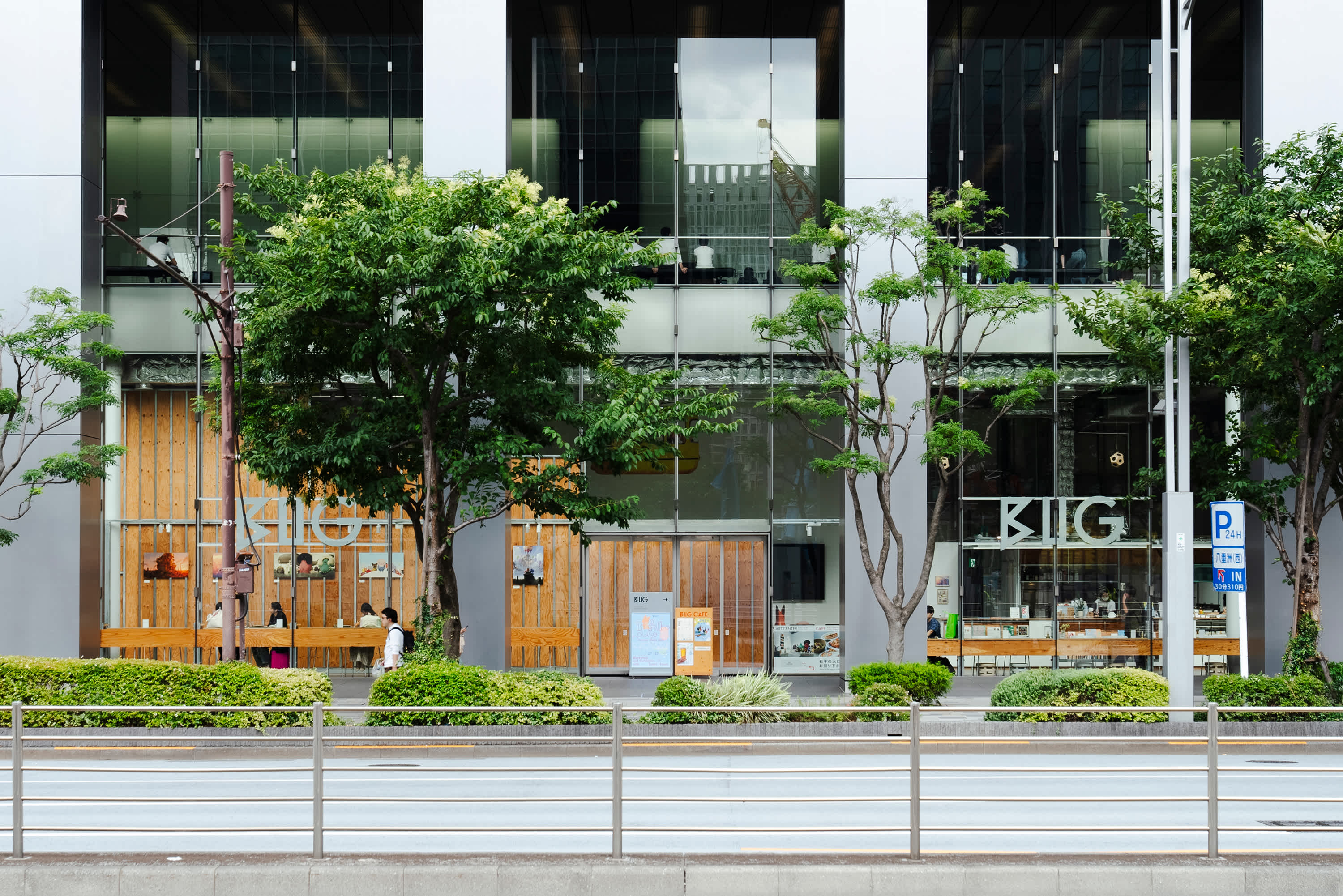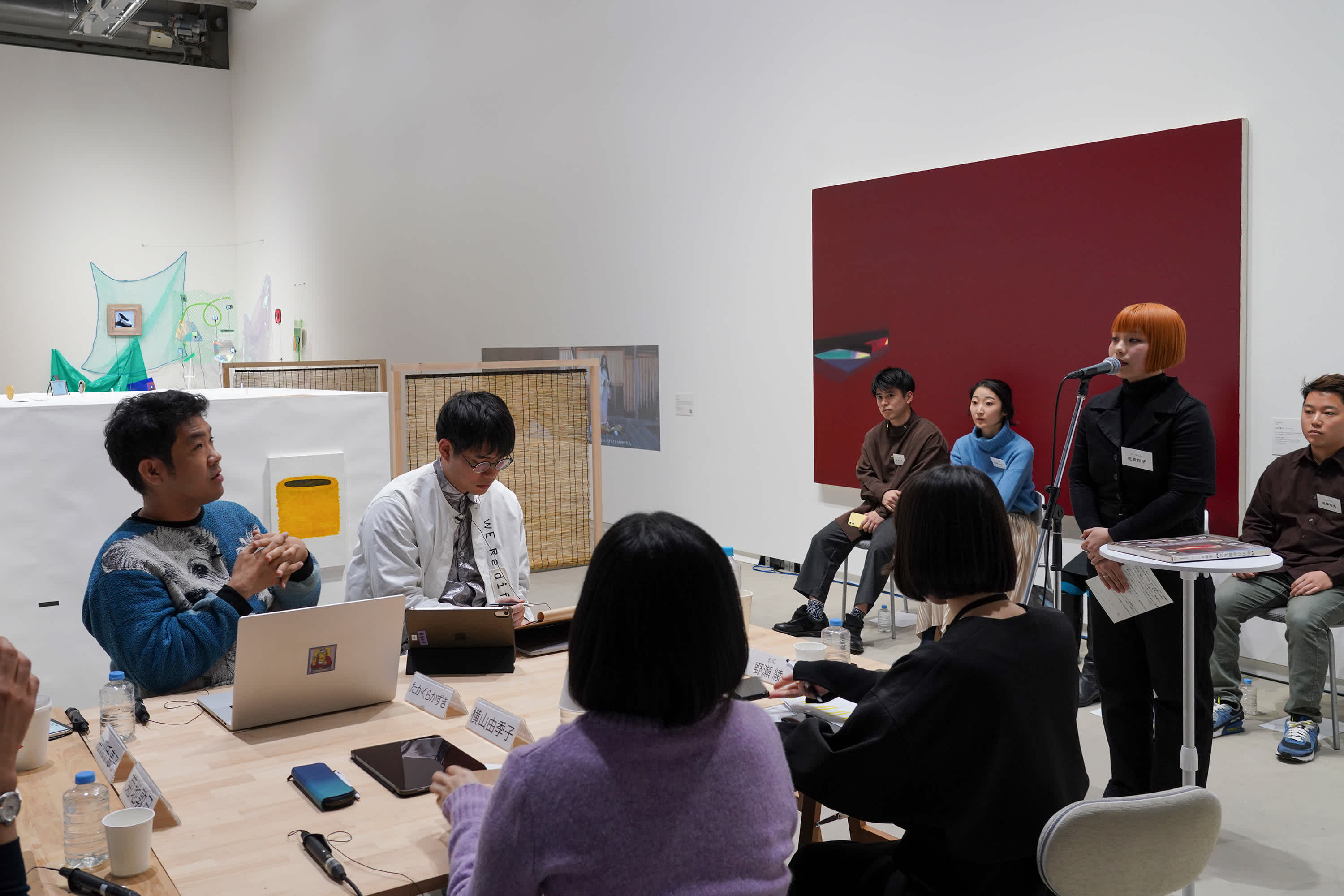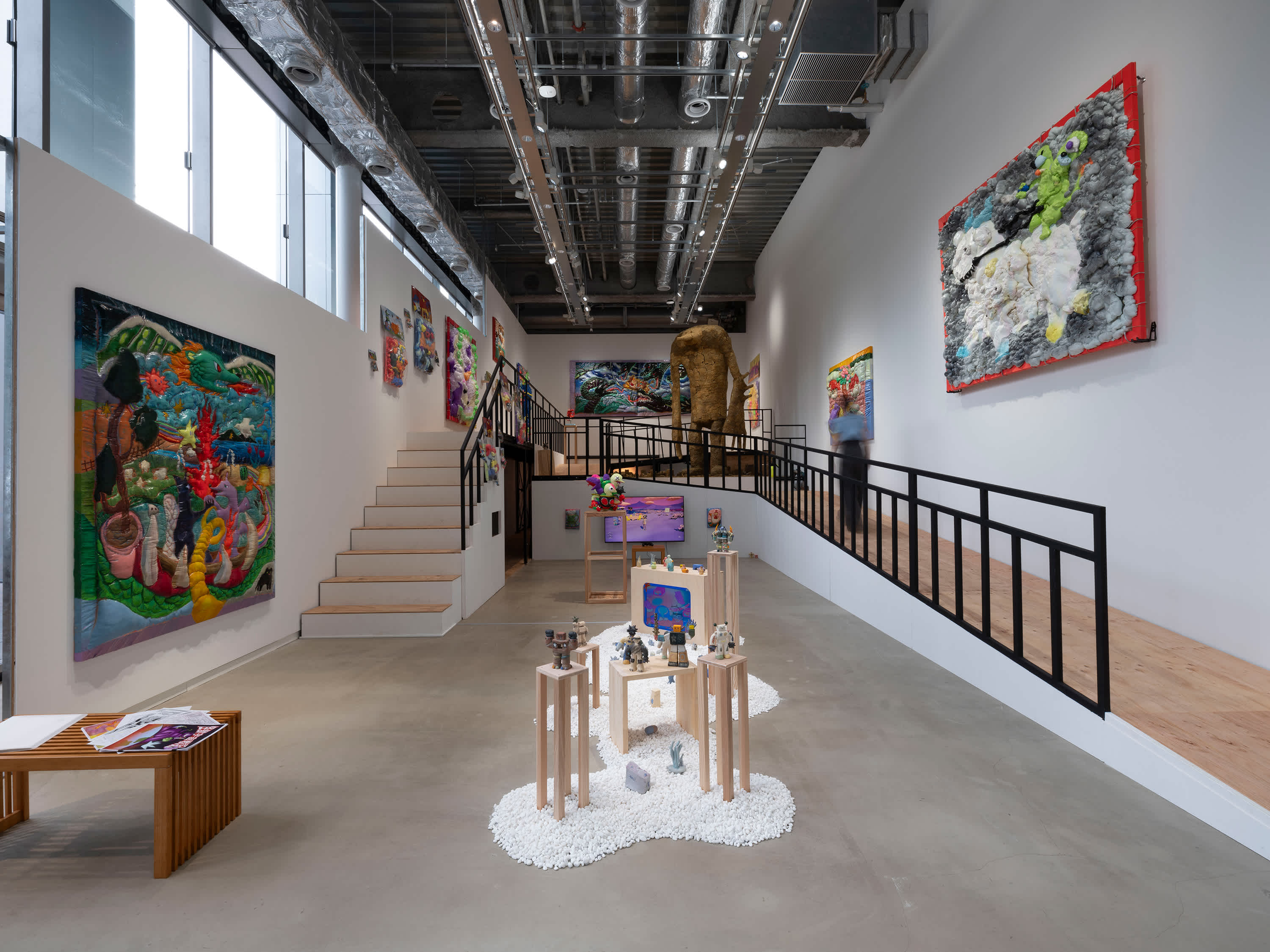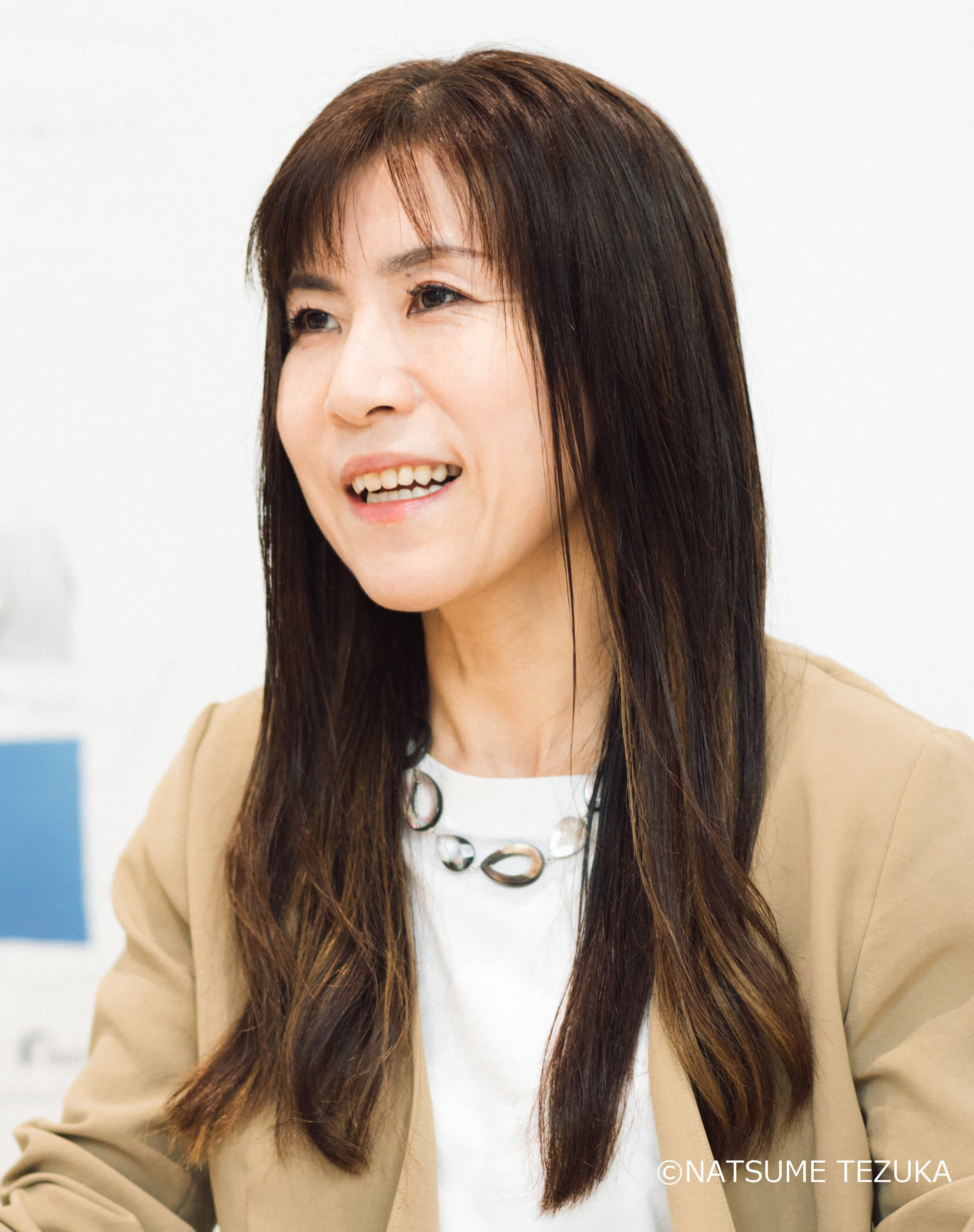The art industry has traditionally been a difficult one for workers, rife with social issues such as gender inequality, a lack of proper contracts and issues with fair compensation. In recent years, however, a growing body of related research into the current situation has been amassed, and many are calling for such issues to be addressed*1.
Recruit has run galleries and art centers for many years, and through exhibitions and events we have created spaces and opportunities for artists and workers in art-related jobs to give their all to their work, as well as fashioned a working environment in which they can work in peace over the long term. As part of this, in 2023 Recruit Holdings opened Art Center BUG in Tokyo, which recently celebrated its first anniversary. We spoke to Terumi Hanagata from the Foundation and Art Center Promotion Department about the initiatives being pursued there.
*1 Sources: Hettie Judah “How Not to Exclude Artist Parents” (2022); art for all “Results of a Questionnaire Survey for the Formulation of Remuneration Guidelines in the Field of Fine Arts” (2022); and Hyogen no Genba “Gender Balance White Paper 2022”
Working in the Art Industry: the Many Social Issues
“When you think about people who work in the art industry, you probably think first of the artists who create the works,” Terumi says. “However, there are many other jobs in the art world, and even a single exhibition would be impossible to stage without the various specialists involved, such as curators, lighting and installation staff, and advertising artists. There are also various ways of working — some are freelancers, while others work as staff or employees at museums or galleries. Recruit Group defines these people as ‘art workers,’ and is addressing the issues facing both artists and art workers in the industry.
“It is not hard to imagine that both artists and art workers have unstable working environments,” she continues. “In fact, many freelancers are not protected by any organization. Frequent problems include not always having work, not being able to find a place to work, promises of payment not being kept, and unpaid labor.
In general, Terumi notes, for-profit companies now take it for granted that they must implement measures such as workstyle reform, career support and the promotion of women’s activities. “In the art industry, though, there are still far too few companies tackling these issues, and they are not even being raised as issues,” she says. “For example, it’s common to work on weekends without receiving any extra pay. There are no role models around to provide inspiration, it’s difficult to map out a career path, and there is no support for those with young children who need childcare. There’s a huge disparity in the art world’s working environment compared to the general working environment.”
Terumi talks about the significance of Recruit Group's involvement in this project as follows: “I wanted to create a new place where individuals wanting a career in the art industry can make one without having to quit because of concerns about making a living or other conditions, and where they can follow their curiosity without reservations. In particular, issues related to freelancing tend to be overlooked, and I believe that Recruit — a company that provides human resource services — should take the lead in addressing them.”
Art Center BUG: A Hub for Artists and Art Workers
Recruit achieved business growth through the expansion of its information magazine business, and has always placed great importance on visual expression. We’ve also had the privilege of working with Yusaku Kamekura (1915-97), a pioneer of Japanese graphic design who crafted the posters and emblem for the 1964 Tokyo Olympics, and devised many product logos and service designs for us as well. In fact, at one point Kamekura even moved his office into the Recruit head office building, and supported the company directly.
Given such roots, we operated two galleries in Ginza for over three decades as a social contribution project, supporting creators and artists. One was Guardian Garden in the GINZA 7 Building (now the Hulic Ginza 7-chome Building), which supported young artists through public exhibitions and other events. The other was Creation Gallery G8 in the Recruit Ginza 8 Building, which primarily introduced the activities of creators who had been active in the industry for many years. After the company buildings were sold, the galleries were closed in August 2023.
Looking back on the activities of those two galleries — and deciding to upgrade and evolve our concept rather than simply repeat it — we opened a new art center in September 2023 in the GranTokyo South Tower in Tokyo Station, home to the headquarters of Recruit Holdings. We call it an art center rather than a gallery because we want it to be a place where, beyond just exhibitions, we can support the activities of artists and art workers, and where people from all walks of life can meet and influence each other through art.
The name “BUG” is a reference to the hope that people will experience a sense of discomfort through art that they would not normally encounter in their daily lives. We’re looking to create a chemical reaction as the diverse expressions and thoughts of different people intersect. We also intend to make the most of our location, which is directly connected to one of Japan’s major terminal stations, and to foster an open space where diverse visitors can encounter new perspectives, people and things.
Terumi also had this to say about the art center for artists and art workers: “I want this to be a hub rather than a place like a museum or art gallery showing a collection of works. I believe it could also serve as a network that delivers a sense of psychological security, where freelancers prone to loneliness can talk and consult with each other in confidence when they’re facing problems with work. I see creating a place that values the passion and careers of each individual involved in the arts as overlapping with one of Recruit Group’s core values — “Bet on Passion.”

Art Center BUG, located at Tokyo Station
We pursue three activity directives through our art center:
1. An award that offers opportunities for creative growth during the screening process. The BUG Art Award is for artists working for less than a decade There is no entry fee. The Grand Prix winner can hold a solo exhibition at BUG about a year after winning the award. An artist fee and the exhibition costs (artwork production costs plus installation and removal costs) of three million yen are also covered. The competition also includes feedback in one-on-one interviews with the judges, as well as lectures and consultation sessions on exhibition and installation.
2. Creating opportunities for communication and social interaction through exhibitions. Exhibitions at the art center are also opportunities for artists to introduce themselves and present and sell their work. Exhibiting artists can experiment with new forms of expression and take their work to the next level. The space also features exhibitions from artists who have a wealth of experience and long careers. These exhibitions showcase their ideas and the passion they put into their work. opening them up to a wider audience through talk events and other activities. In this way, the center also provides opportunities for young artists and students who visit our exhibitions to gain new insights.
3. Activities that support skill upgrades and career advancement for art workers. For example, the online program for planners, CRAWL, involves planners spending around three months working with a mentor to refine their proposals. The planners then submit their proposals to be voted on by the mentors, BUG staff and the planners themselves. Winning proposals are then staged at the art center by their respective planners. These initiatives also create networks for young art critics who seldom get the chance to present their work; asking them to write reviews of exhibitions. These reviews are then published on our website. Credit is always given to the art workers involved in various projects, ensuring that their activities get to be in the spotlight.

The finalists for the BUG Art Award giving their presentations
Better Work and Better Life Opportunities for Artists and Art Workers
Our art center’s policy is to ensure that all activities take into account the life stages of artists and art workers, and to provide appropriate partnerships and career support.
We take care of basic considerations such as scheduling events in ways that allow artists with children to balance work and childcare whenever possible. When inviting artists with children to speak at events or take part in exhibitions, for example, we ask about their childcare situation and do our best to provide appropriate support. For the BUG Art Award, we allow applicants to close gaps in their work history due to childbirth, childcare, or caring for family members.
When organizing activities, we always use formal contracts with artists and art workers, clearly stating the rights of both parties, including copyrights, as well as remuneration and production costs. When organizing exhibitions, we make sure that we have insurance in place to cover any injuries to artists and art workers.

Character Matrix — an exhibition held in August/September 2024
“We are always striving to upgrade the working environment and support the careers of artists and art workers so that they can work with peace of mind over the long term,” Terumi says. “Since Recruit Group operates a human resource services business, I believe this concrete measure will have an impact on the art industry.”
Asked about the issues she would like to tackle next, Terumi says: “There are many art industry jobs that are not readily visible from the outside, and the industry is built on the work of these people. However, unlike artists, they’re unlikely to have their names in the public eye, and they are also often disadvantaged in terms of remuneration and working hours. I’d also like to ensure that the roles these art workers take on as specialists are given the fullest value.”
Recruit Group’s mission is to create opportunities for life, and one of our core values is to “Wow the World.” We want to create places and opportunities where artists and art workers can try new things with all their might. We would also be happy if everyone who visits our art center, including our employees, enjoy chance encounters with the output of artists and art workers. These could lead to something new being noticed, or provide an opportunity to see things from a different angle and make something good happen.
Art Center BUG is just a short stroll from Tokyo Station, and also has a café. Please drop by!
Links:
BUG|Recruit Art Center

Terumi Hanagata
Head of Art Center BUG, Vice President of Foundation & Art Center Promotion Department, Recruit Holdings Co., Ltd.
After joining Recruit Co., Ltd. straight out of university, Terumi gained experience in recruitment advertising sales, marketing in the housing sector, sales planning, human resources, and the launch of new businesses and organizations. In 2011, she took charge of corporate human resources and CSR, and then switched to gallery management in 2012.